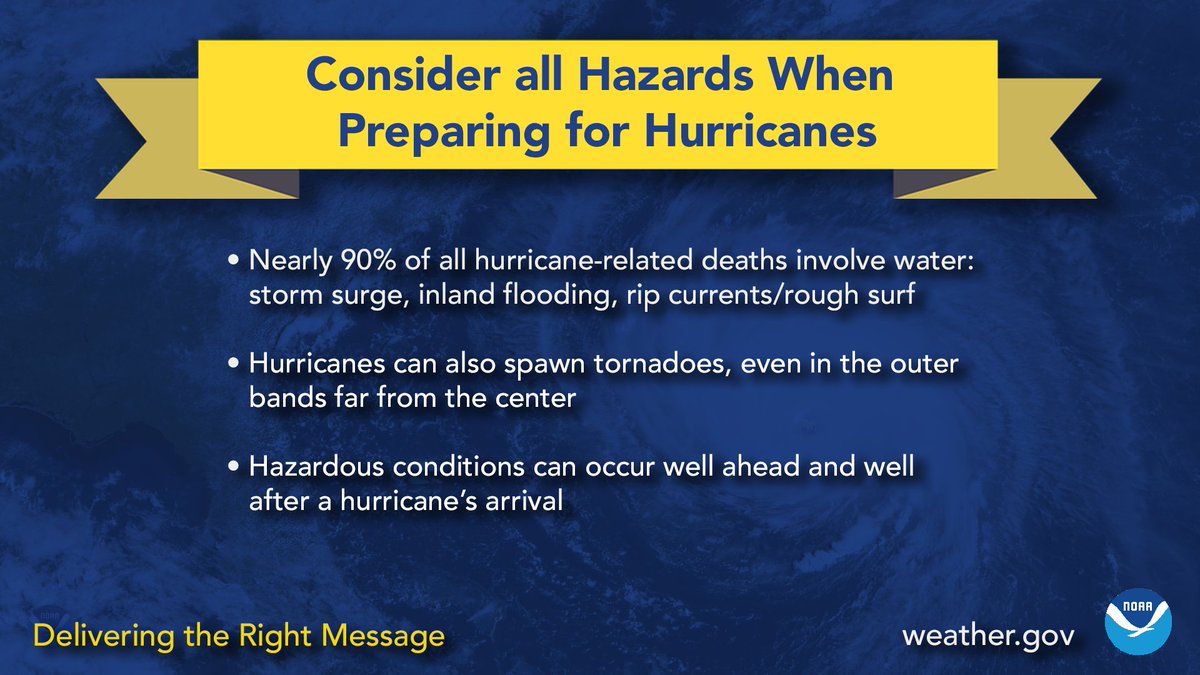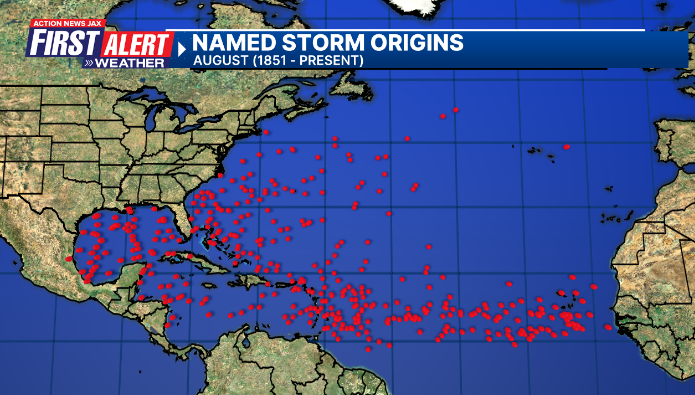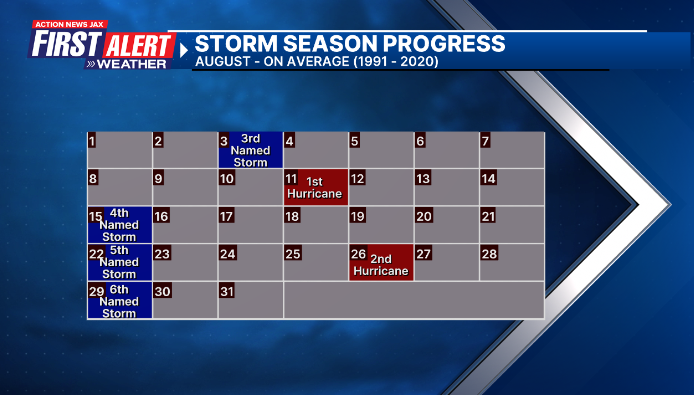Jacksonville, Fl. — *I am filling in for Chief Meteorologist Mike Buresh on his tropics blog Tuesday and Wednesday!*
THE TROPICS:
***** ALWAYS CHECK & RE-CHECK THE LATEST FORECAST & UPDATES! ****
Tropics threats/impacts for Jacksonville/NE Florida/SE Georgia: An increase in seas & surf & a dangerous rip current this week... as Erin moves northbound far to the east of Florida. Peak breakers at the beaches will be Wed. at approximately 6-10 feet. Some beach erosion is likely along our local coastline. Winds become offshore - out of the west - by Thursday nicely cleaning up the surf. Improving conditions by later Thursday & especially Friday. The best advice is to stay out of the water this week.
The Atlantic Basin Overview:
The Atlantic hurricane season is June 1st through Nov. 30th.
(1) A Tropical Storm Warning is in effect for...* Turks and Caicos Islands* Southeast Bahamas* Beaufort Inlet to Duck, North Carolina
A Tropical Storm Watch is in effect for...* Central Bahamas* North of Duck, North Carolina to Cape Charles Light, Virginia
A Storm Surge Warning is in effect for...* Cape Lookout to Duck, North Carolina
Tropical wave ‘97-L’ moved off the coast of Africa last Sunday & was upgraded to tropical storm “Erin” last Monday. morning. Erin slowly organized & strengthened & was upgraded to a hurricane Fri. morning - the first of the Atlantic season- a little later than the avg. date of Aug. 11th. During a period of rapid intensification (RI), Erin reached Cat. 4 by early Saturday morning, and then a Cat. 5 shortly before noon - only the 5th Cat. 5 to occur over the Atlantic Basin on or before Aug. 16th. Erin weakened quite a bit Sat. night through an eyewall replacement cycle but strengthened again before leveling off & gradually weakened Monday night.
Erin will likely fluctuate in intensity for the rest of the week due to shear & slowly decreasing ocean temps. Erin will remain a hurricane this week while turning rather sharply northward and stay east of the U.S. east coast (& far to the east of Florida)... & west/northwest of Bermuda. Erin’s girth should continue to increase rather dramatically making for a very large envelope of strong winds & especially high seas & rough surf this week. The Outer Banks of North Carolina will likely see at least tropical storm force wind gusts (50-60 mph) Wed night /Thu and some overwash along portions of the main highway there. 40+ mph sustained winds may be possible depending on how close Erin ultimately comes to the NC Coast. Storm surge could be as high as 2-4 feet in the Outer Banks, along with 15-20 feet waves. Some evacuations have been ordered by local officials.

Operational model trends as well as ensemble guidance (conglomeration of all the model output) continue the northward movement and keep Erin well to the east of Florida & the U.S. east coast. Erin will *not* be a direct threat to Florida. At least weak troughing - or break in the ridge of high pressure - will remain over or near the Western Atlantic helping to complete the critical northward then northeast turn. Conditions will slowly improve for the Southeastern Bahamas and Turks and Caicos today.
And there will be impacts to Bermuda by late next week as Erin moves by to the west & north of the island.
Again - stay up to date on the latest forecasts.
(2) Another strong tropical wave has moved off the coast of Africa & has some long-range potential. Global forecast models have been all over the place. The GFS has often indicated a hit on the U.S., but it’s jumped around wildly on where. The European model sometimes shows the wave developing into a storm, then loses the system on another model run & has generally been more to the north, implying a recurve over the Atlantic. Plenty of time to watch, but this will be a wave to carefully monitor over the next week or so.
(3) The African tropical wave train is in full swing at the moment, as another wave (99-L) has moved off the coast. We will track it, however, there is some question as to how long/far it can make it west. Some global models have development behind the lead tropical wave well to the west of “99-L”.




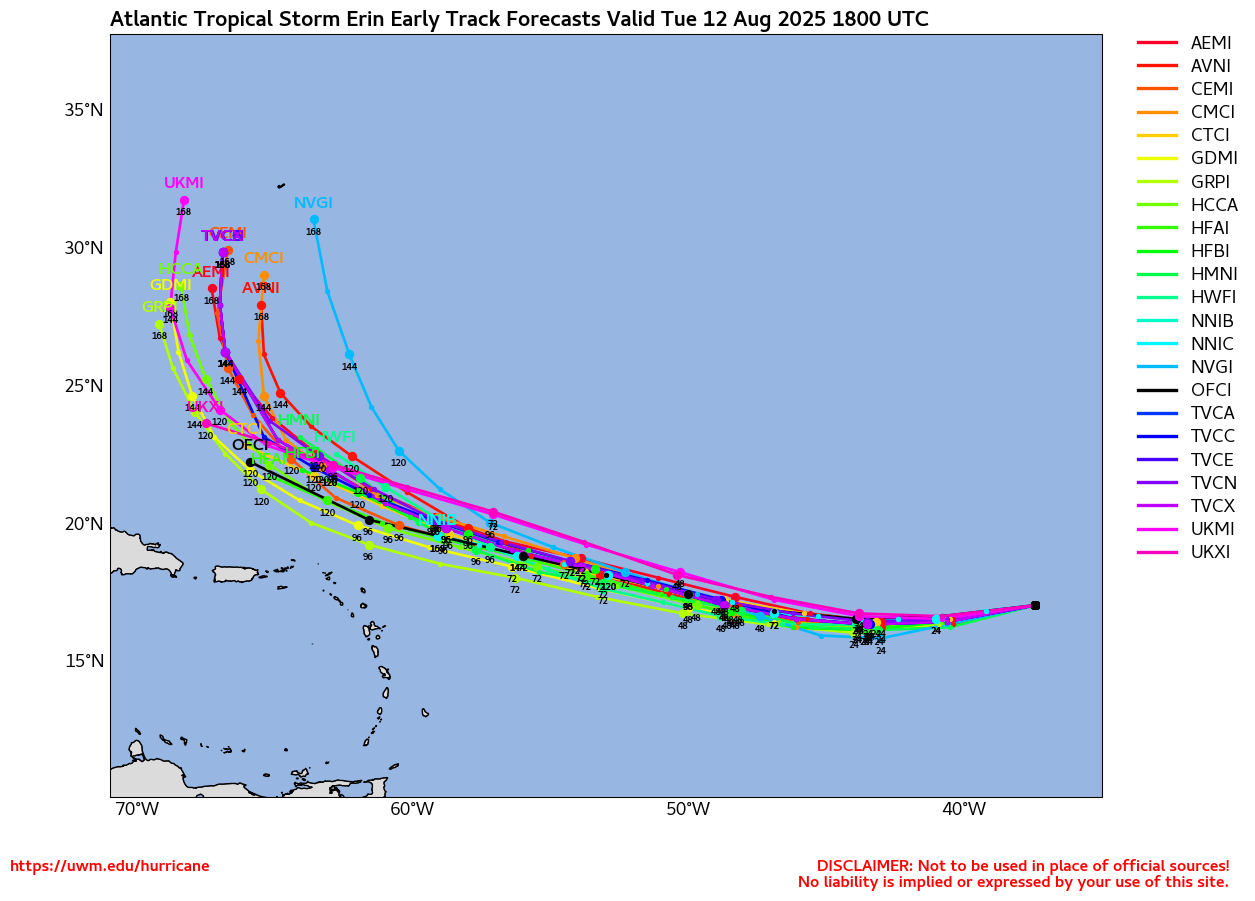





‘Velocity potential anomalies’ below. shows “Rising” air (green lines) equates with an uptick in overall convection. With rising air, conditions are generally more favorable for tropical development. Where there are brown lines, the air is generally sinking & is often less conducive to tropical cyclones (though not impossible to have development).
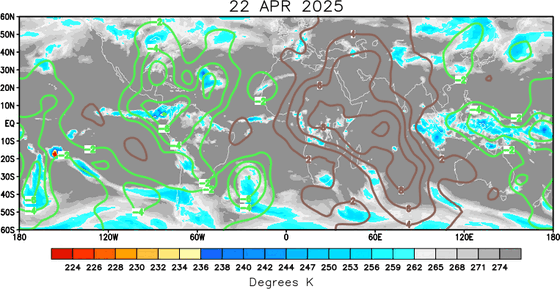
The “Buresh Bottom Line”: Always be prepared!.....First Alert Hurricane Preparation Guide... City of Jacksonville Preparedness Guide... Georgia Hurricane Guide.
STAY INFORMED: Get the * FREE * First Alert Weather app
FREE NEWS UPDATES, ALERTS: Action News Jax app for Apple | For Android
WATCH “Preparing for the Storm”
WATCH “The Ins & Outs of Hurricane Season”
READ the First Alert Hurricane Center “Preparation Guide”
LISTEN “First Alert Weather: Preparing for the Storm”
Federal Alliance for Safe Homes (FLASH) * here *.
REMEMBER WHEN A TROPICAL STORM OR HURRICANE IS APPROACHING: Taping windows is *not* recommended & will not keep glass from breaking. Instead close curtains & blinds.
Realize the forecast cone (”cone of uncertainty”) is the average forecast error over a given time - out to 6 days - & *does not* indicate the width of the storm &/or where damage might occur.
The map below shows the *average* time for a tropical wave coming off Africa to travel west & northwest. Only about 1 in 5 tropical waves - on average - become a tropical cyclone of some sort (depression/storm/hurricane):
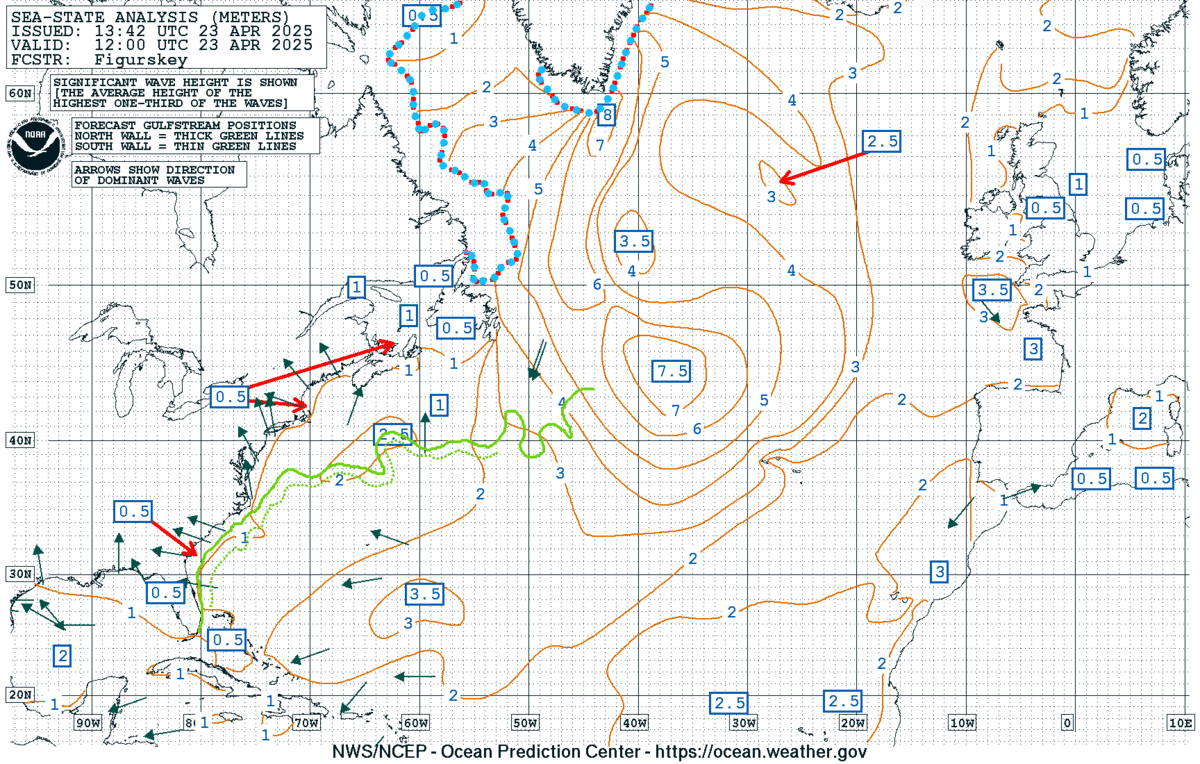
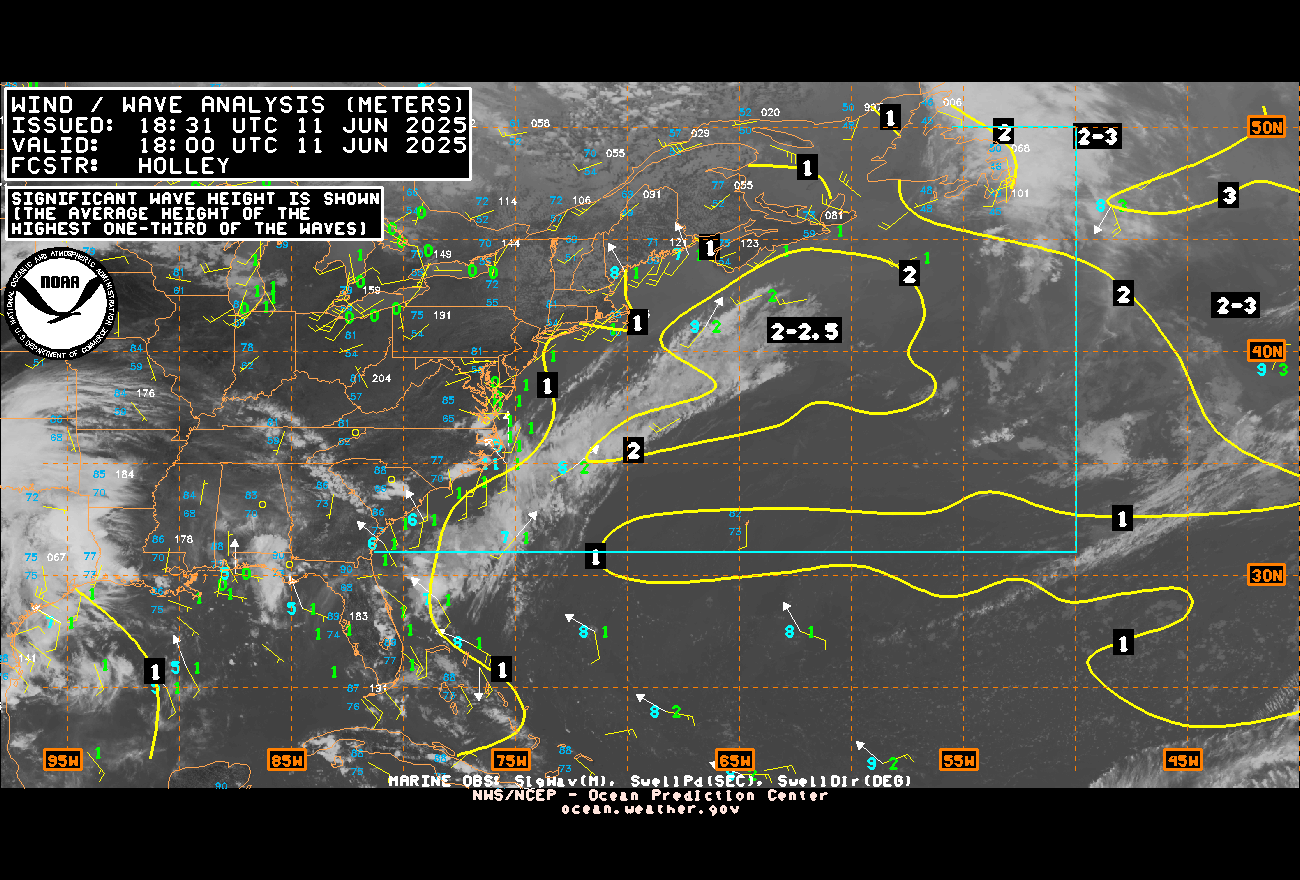




Water vapor loop (dark blue/yellow is dry mid & upper level air):

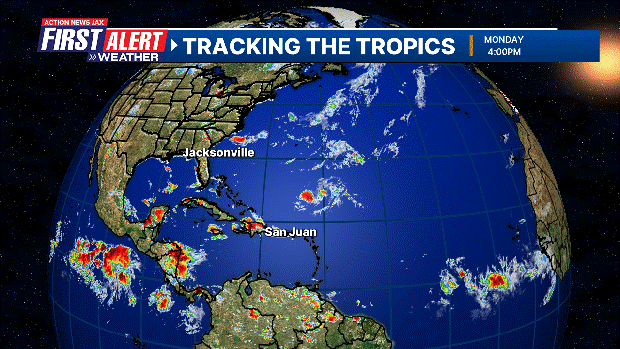
August Atlantic tropical cyclone origins:
Averages below based on climatology for the Atlantic Basin for August:
Wind shear (red - strong shear; green - low shear). Shear is typically strong to start the hurricane season:



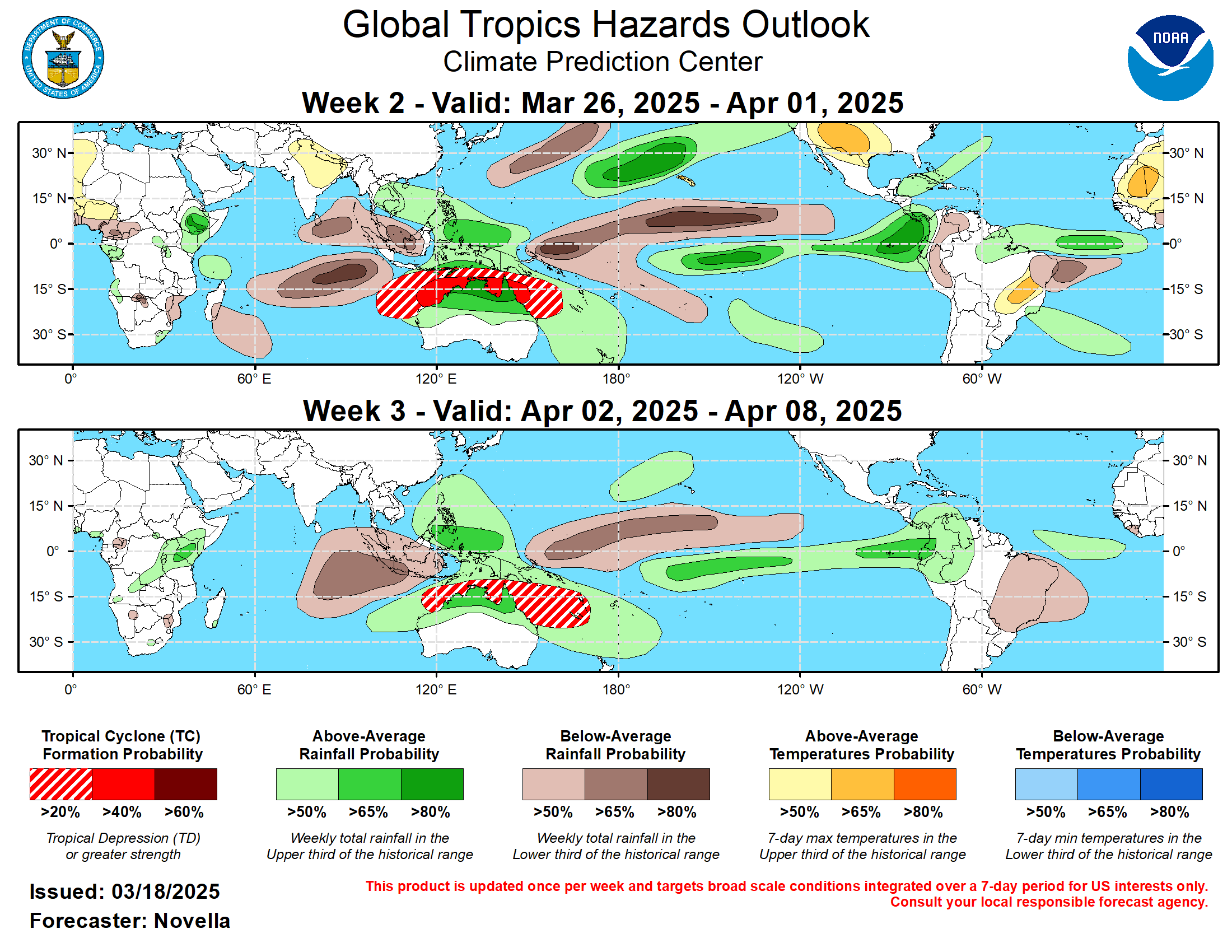
Saharan dust spreads west each year from Africa driven by the prevailing winds (from east to west over the Atlantic). Dry air = yellow/orange/red/pink. Widespread dust is indicative of dry air that *can* interfere with the development of tropical cyclones. However, sometimes “wanna’ be” waves will just wait until they get to the other side of - or away from - the dust plume then try to develop if other conditions are favorable (we saw this with Beryl & Debby last year). It’s my personal opinion that there is way too much “hoopla” about the presence of Saharan dust & how it relates to tropical cyclones. In any case, the peak of Saharan dust typically is in June & July, & we are indeed seeing a large “blobs” of Saharan dust over the Central & Eastern Atlantic that’s thinning with westward extent but enough of it to make for hazy skies across the Caribbean & - at times - across parts of Florida.
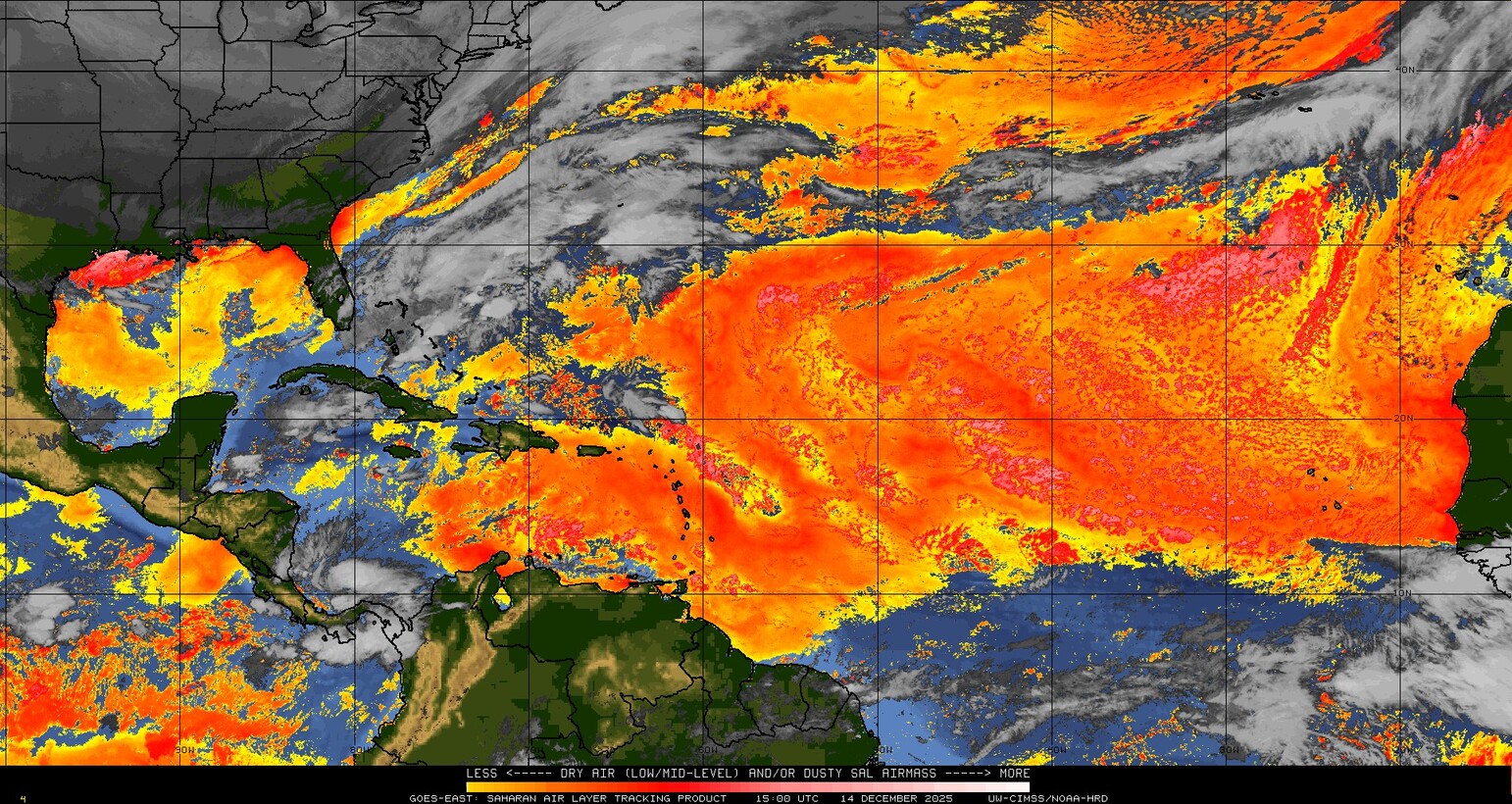
2025 names..... “Fernand” is the next name on the Atlantic list (names are picked at random by the World Meteorological Organization... repeat every 6 years). Historic storms are retired [Florence & Michael in ’18... Dorian in ’19 (the last time this year’s list was used) ... Laura, Eta & Iota in ‘20 ... Ida in ‘21 ... Fiona & Ian in ‘22... no names were retired in ‘23 for the first time since 2014... & Beryl, Helene & Milton last year in 2024]). The WMO decided - beginning in 2021 - that the Greek alphabet will be no longer used & instead there will be a supplemental list of names if the first list is exhausted (has only happened three times - 2005, 2020 & 2021). The naming of tropical cyclones began on a consistent basis in 1953. More on the history of naming tropical cyclones * here *.

Hurricane season climatology:
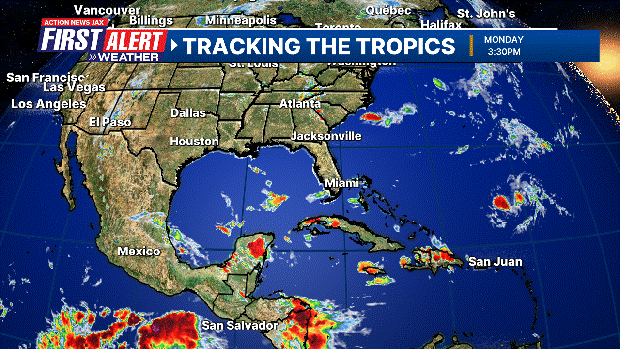



East Atlantic:




Mid & upper level wind shear (enemy of tropical cyclones) analysis (CIMMS). The red lines indicate strong shear:
Water vapor imagery (dark blue indicates dry air):

Deep oceanic heat content over the Gulf, Caribbean & tropical Atlantic. The colors will brighten greatly as the water warms to greater depths deeper into the season. It’s worth noting that the deep oceanic heat content right now is not as high as this time last year.

Sea surface temps.:

Sea surface temp. anomalies:
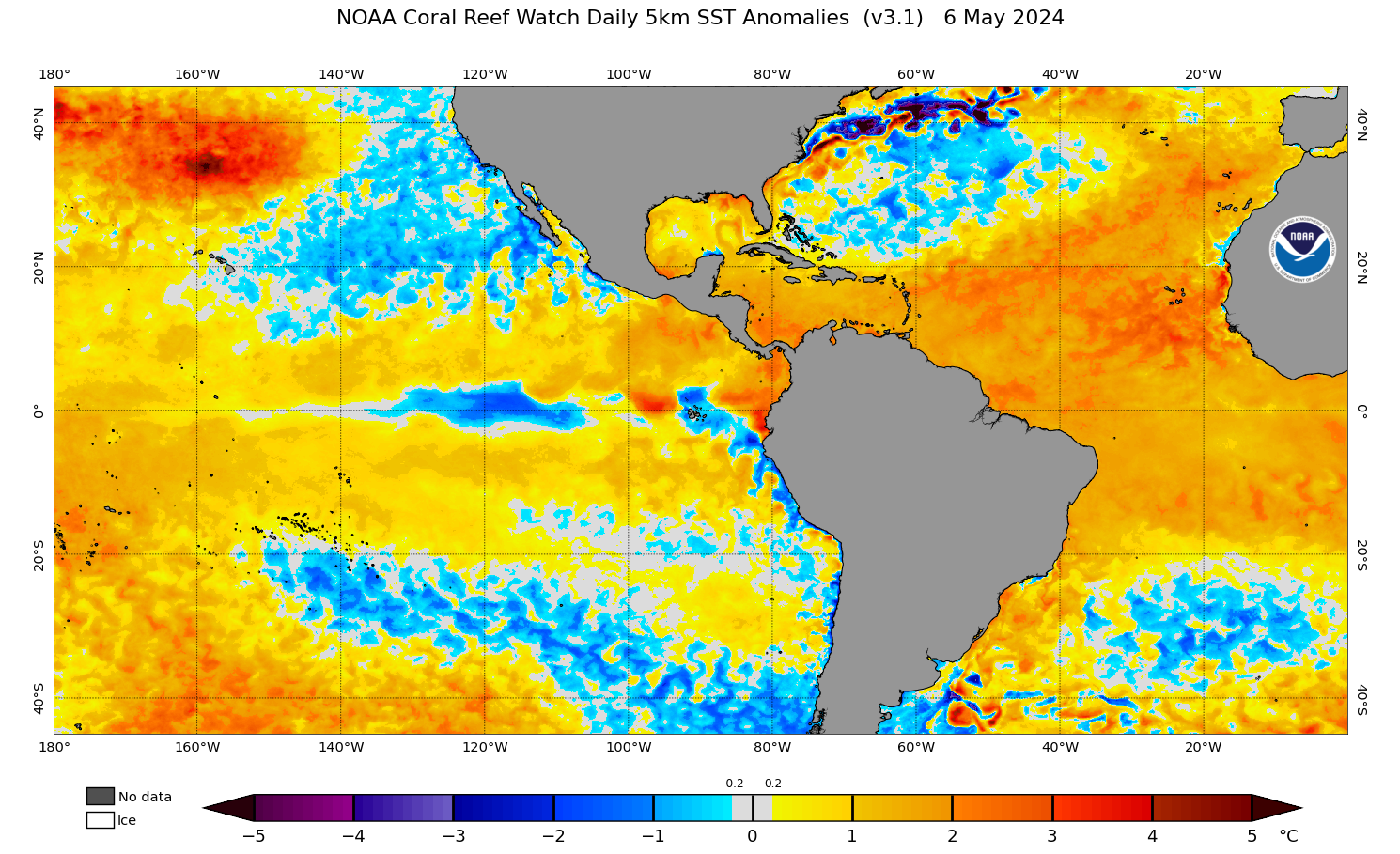
SE U.S. surface map:
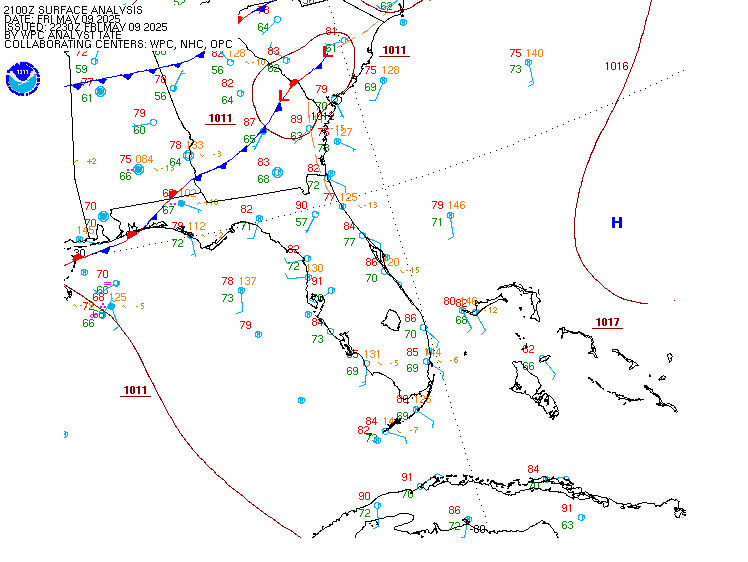
Surface analysis centered on the tropical Atlantic:
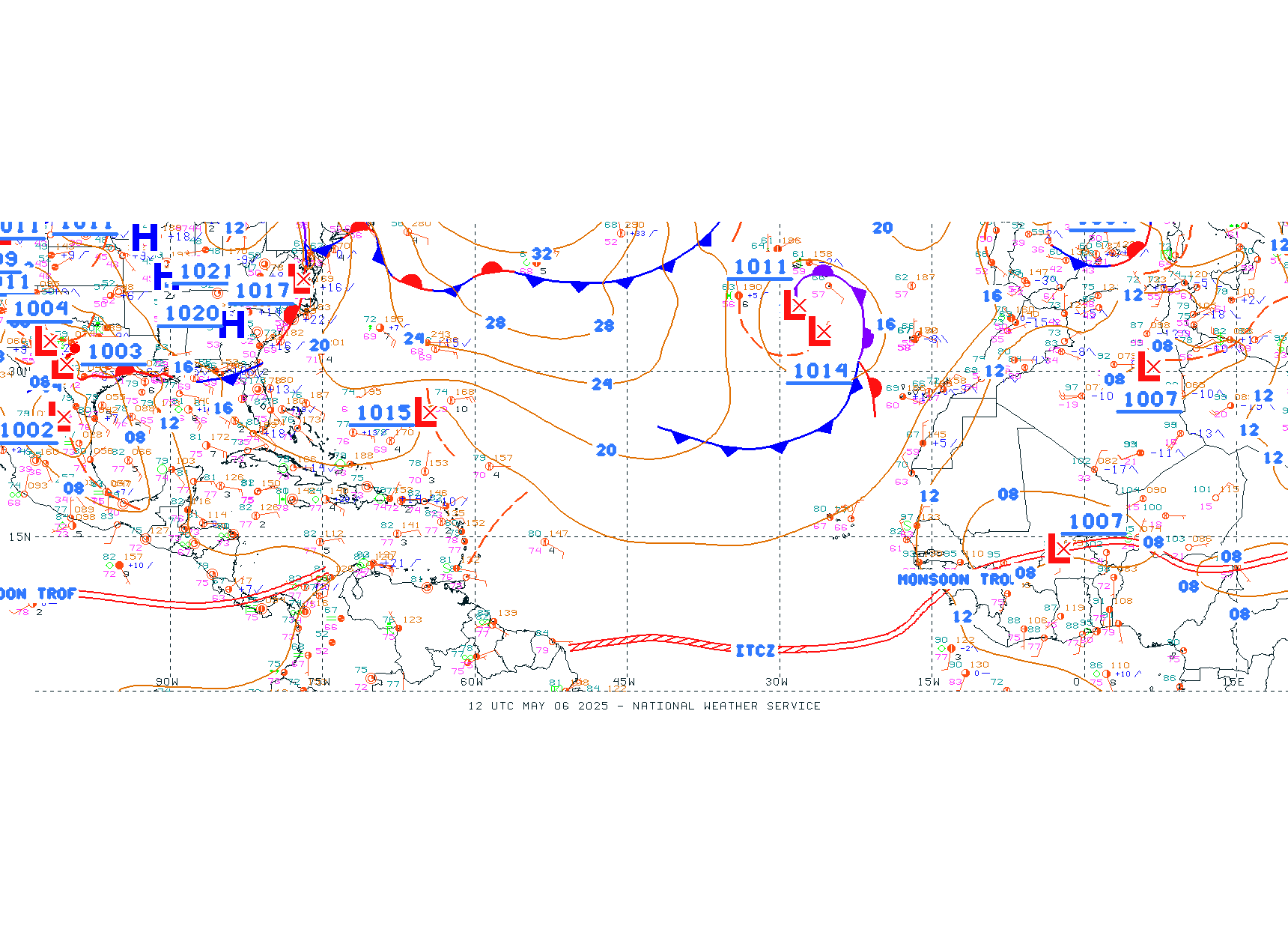
Surface analysis of the Gulf:

Caribbean:

Atlantic Basin wave period forecast for 24, 48, 72 & 96 hours respectively:
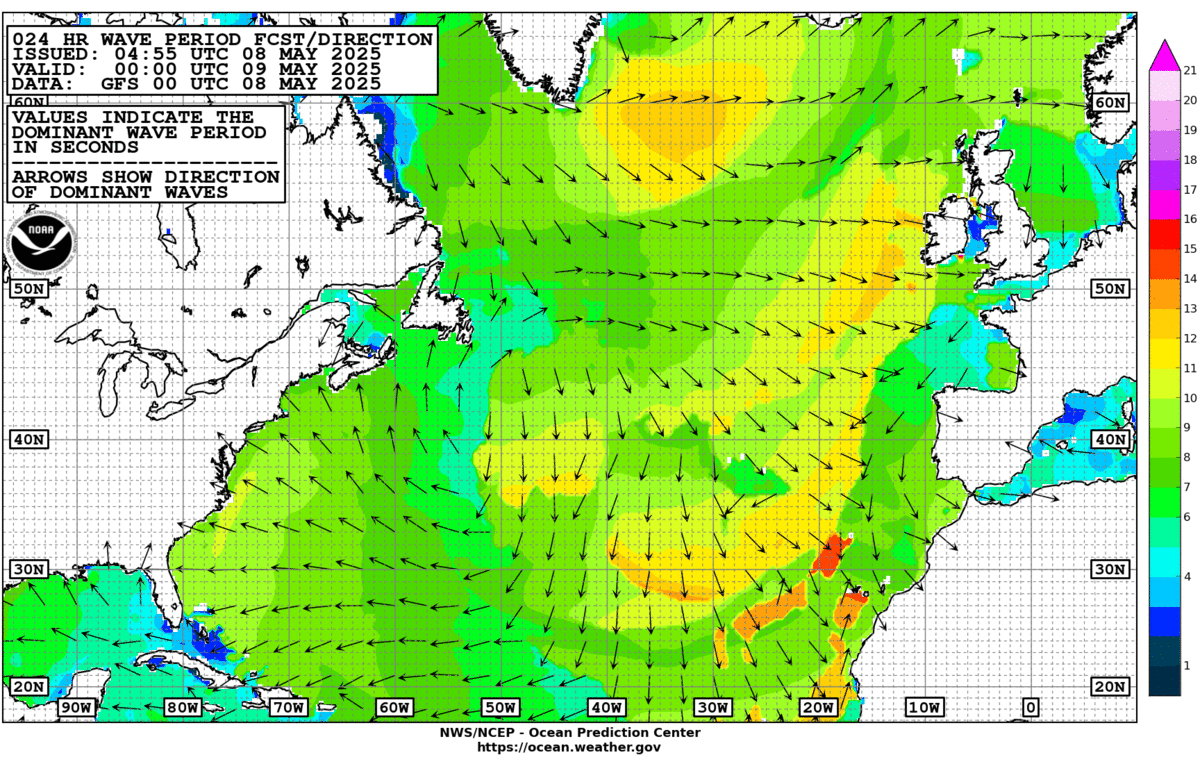
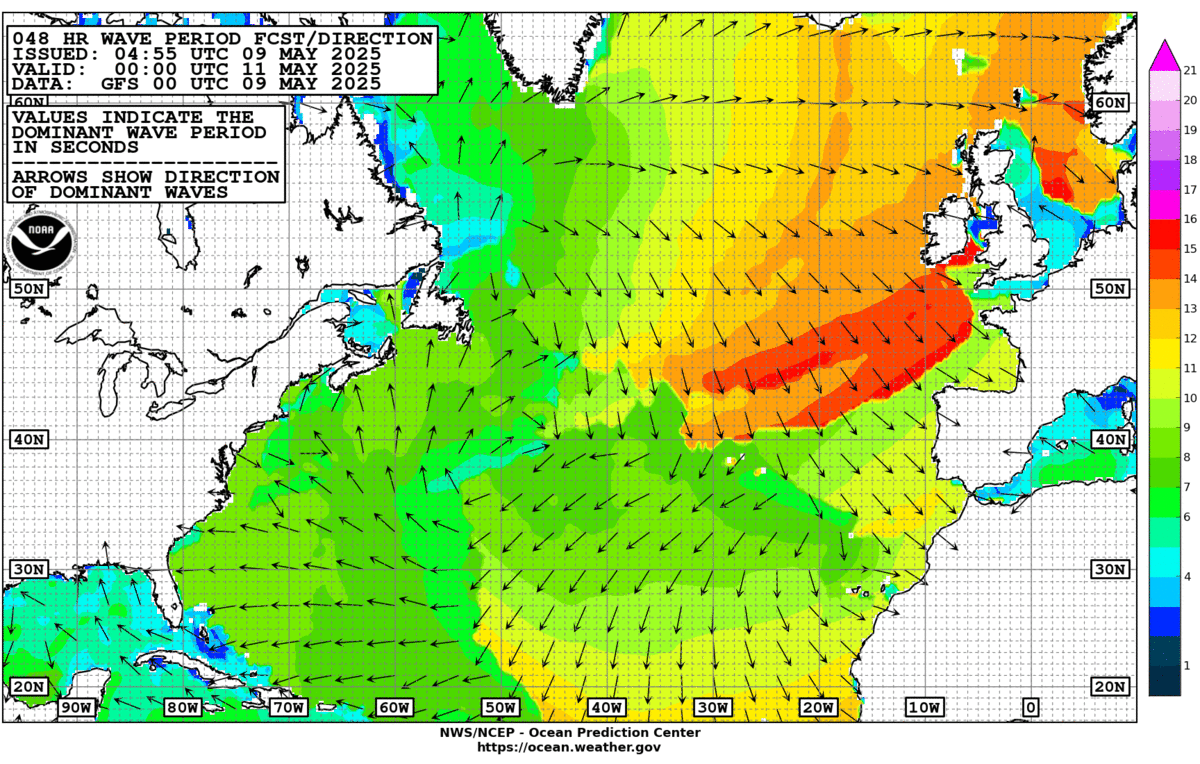
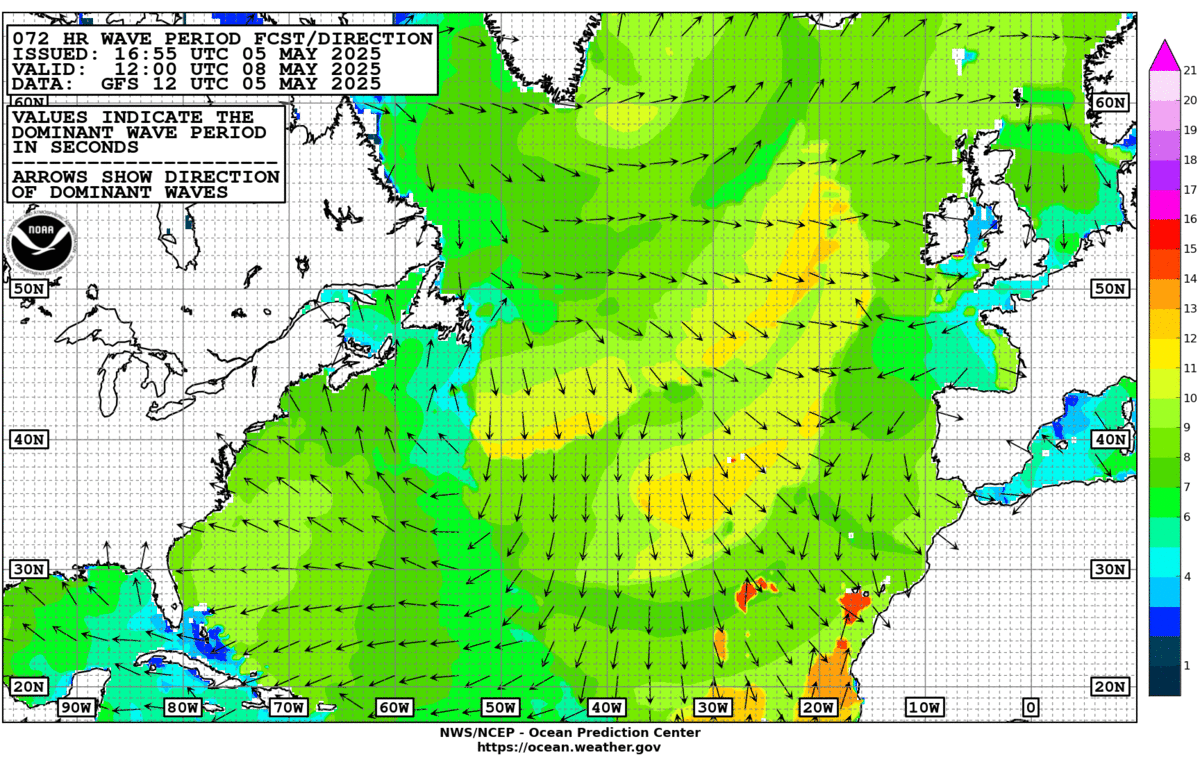
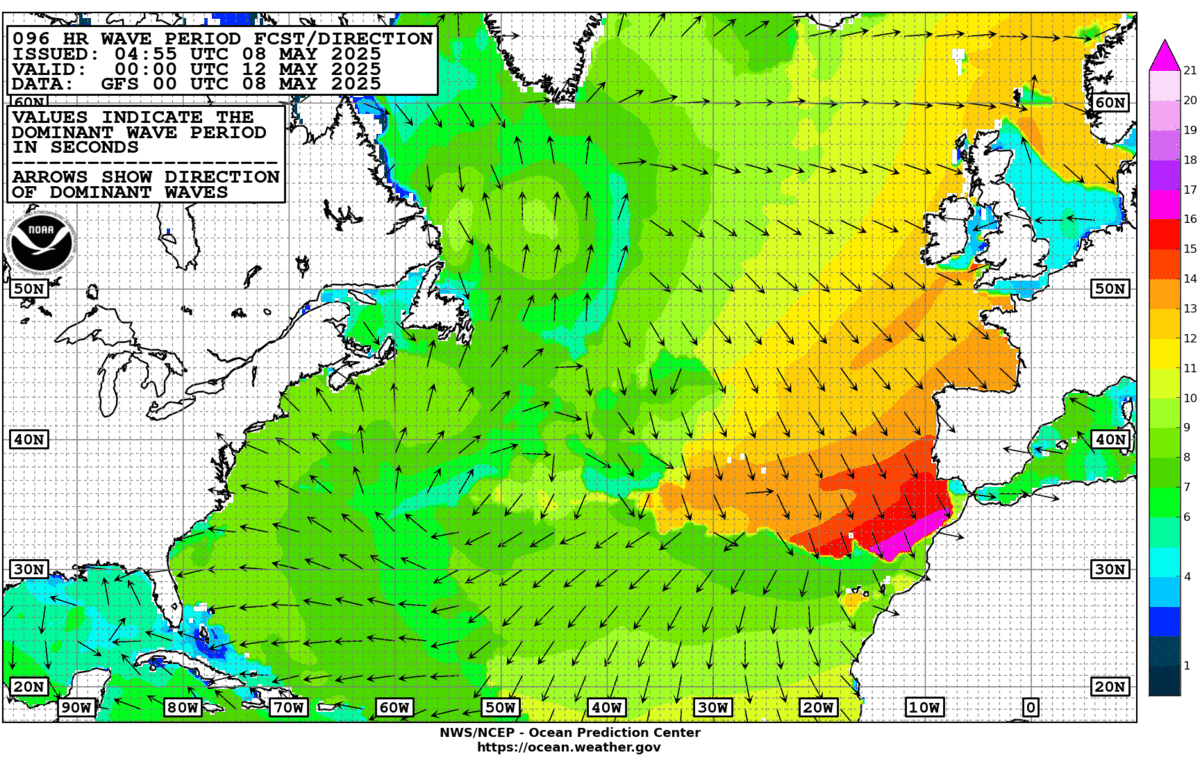

This past spring I visited the west coast of Florida - from Cedar Key to Tampa Bay - to see how the area is recovering from the very rough ‘24 hurricane season namely Helene & Milton:
East & Central Pacific:
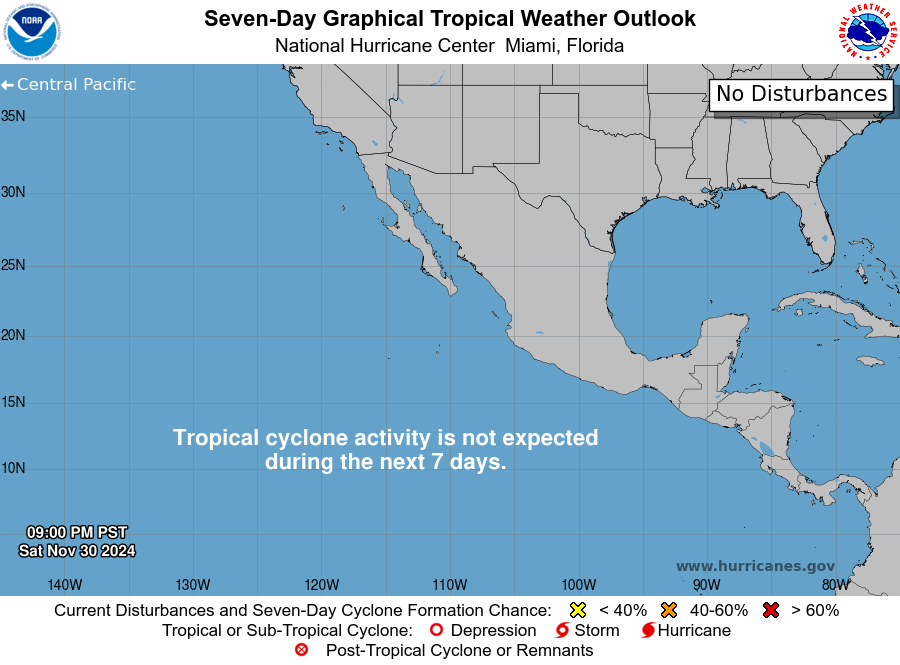



Central Pacific:
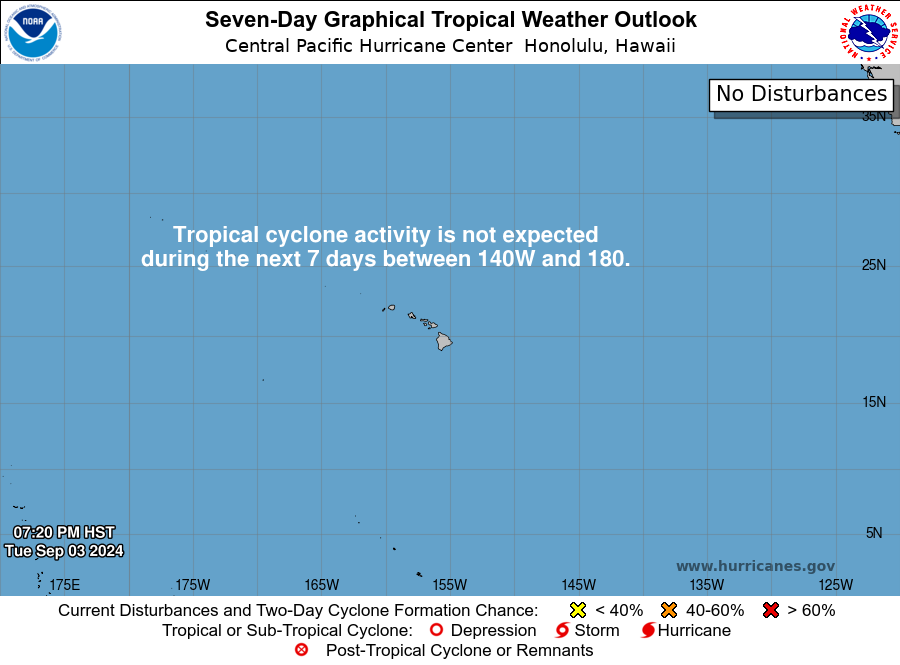
Hawaii satellite imagery:

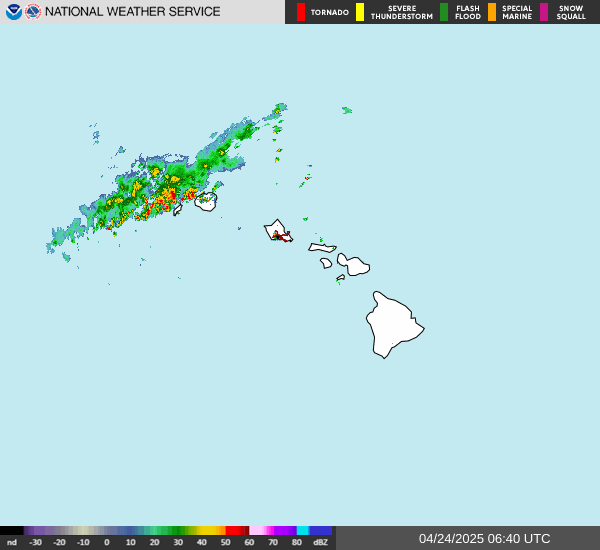
West Pacific:
Global tropical activity:
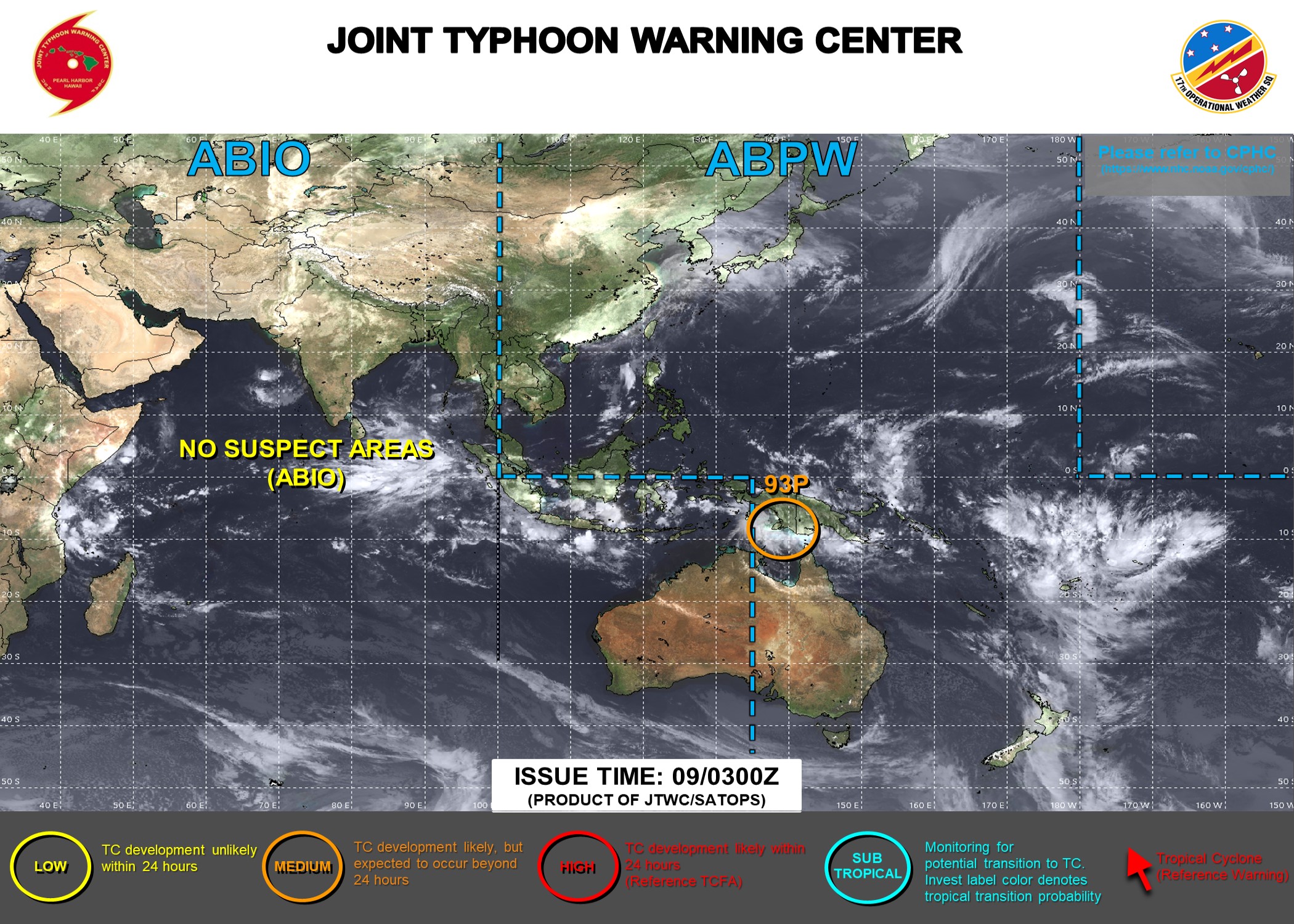
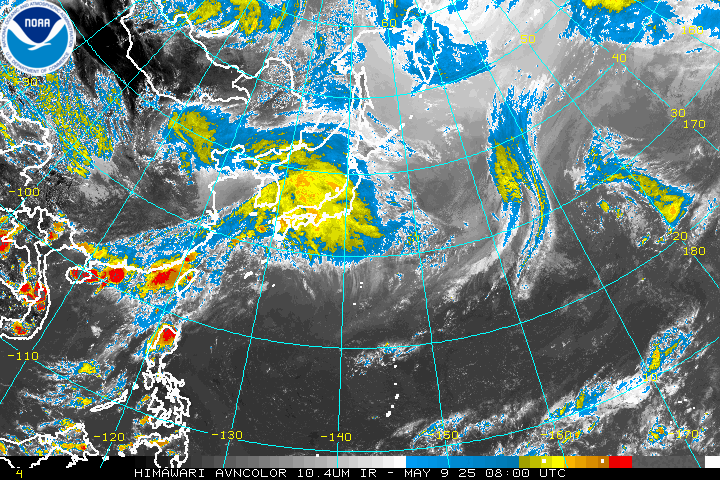
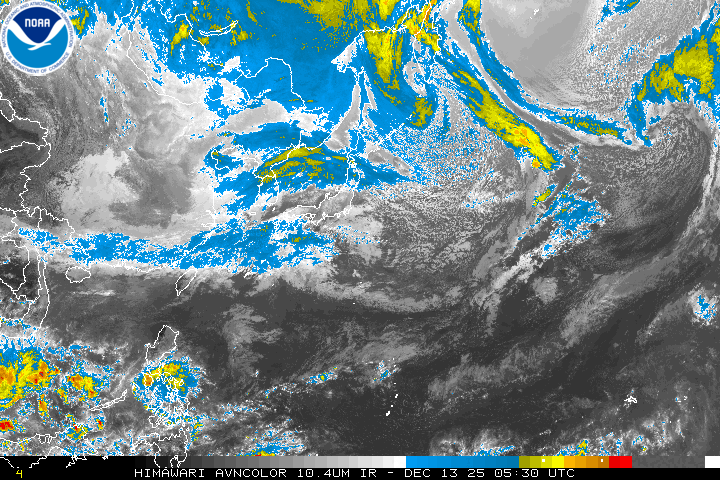
Cox Media Group


